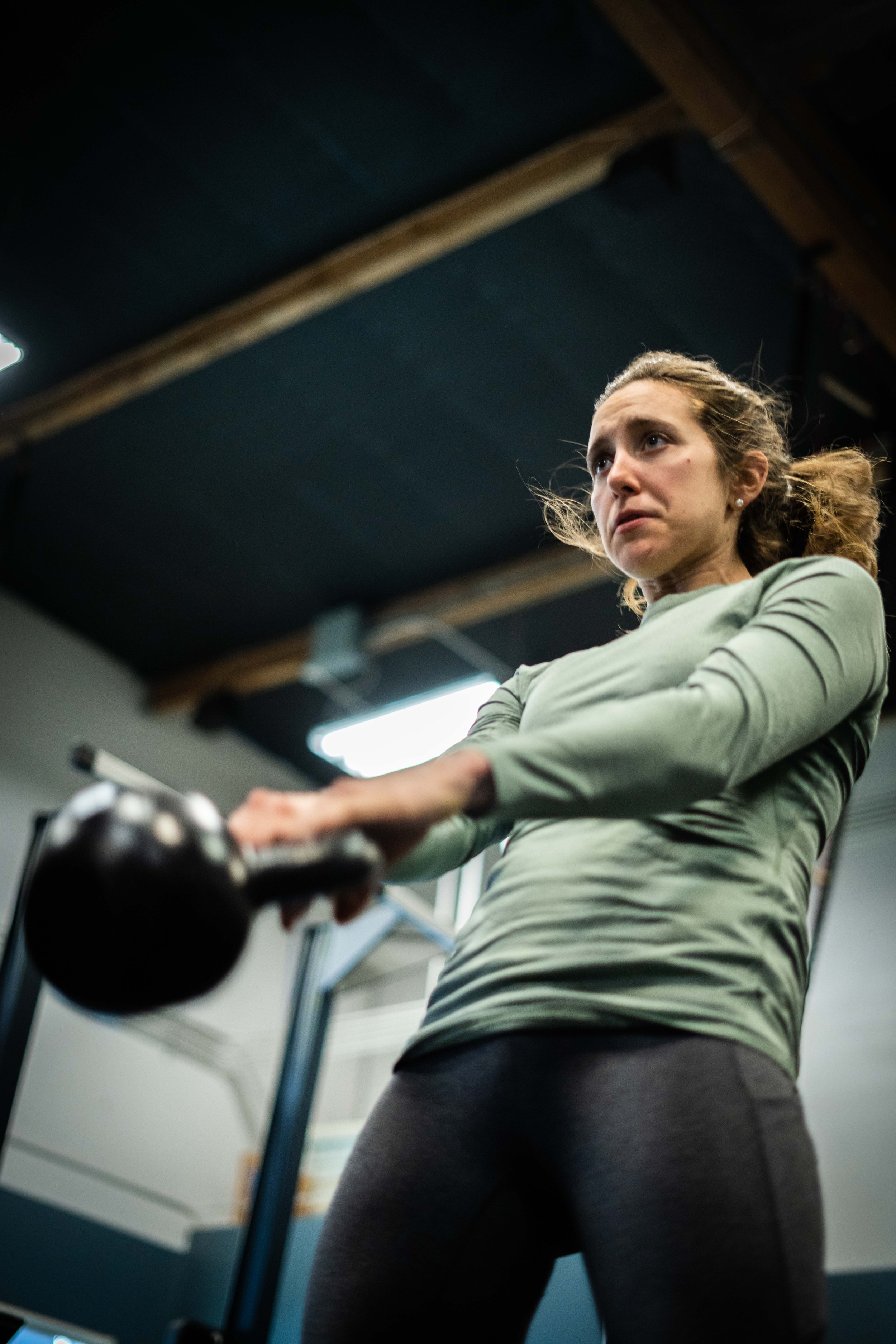Strength Training 101 for Runners
The Rundown on What, Why, When, and How
Article written by Megan Flanagan, MPH, CPT
Why should runners strength train?
Strength training comes with a host of benefits, including injury prevention, better running economy, improved bone mineral density, and a more resilient body to power up and down hills. If you need a little more convincing, take it from the research. According to studies compiled by the British Journal of Sports Medicine, strength training programs improve running economy (oxygen and energy use) by 2%-8%, along with trial performance by 2%-5%. That’s a minute or two off a 10k race – and even more for an ultramarathon! In addition, strength has shown to increase time to tire over the course of races. This is key for ultra runners! Because many running-related injuries are often associated with a lack of strength, leading to compensation down our kinetic chain, it’s important for athletes to strength train with the goal of preventing injury too. A strength training plan is just as much a part of a well rounded running plan as the running itself.
What to do
Naturally, most runners want to focus their energy on their main sport: running. With limited time to dedicate to a strength routine, most of us do not want or need to incorporate “leg days” or “back and biceps” into our already saturated training schedules.
What to do…
To maximize your time, I recommend a full body routine two to three times per week for 20-40 minutes per session, or roughly 10-20% of your overall training volume. Based on this guideline, for 5-8 hours you spend running, aim for at least 1 hour of strength training to complement.
So, when you get into the gym, what exercises should you be doing? As a blueprint, consider the following five major movement patterns:
-
Squat, lunge, step up or other quad dominant movement (bonus if it’s a single leg exercise!)
-
Hinge or posterior chain dominant movement (i.e. deadlifts, glute bridges, hamstring stability ball curls – again, incorporate single leg, when possible)
-
Upper body posterior chain / back exercise (i.e. pull-ups or chin-ups, rows, band pull-aparts, reverse flies)
-
Upper body push exercise for chest/shoulders/arms (i.e. push-ups, shoulder press, chest press, tricep dips)
-
Core, carry, and/or rotational movement (i.e. farmer or suitcase carries, cable or band pall-of-press or woodchoppers, plank variations)
Ever heard the saying, “hard days hard, easy days easy?” This applies to strength training, too.
When to do it…
Two quality strength sessions each week are better than trying to do something every single day. Small, achievable bouts of work create lasting habits, and even if you can manage more work, your body won’t be able to fully recover between sessions. This could compromise your running or future strength training, leaving you with less capacity to perform at your highest level. If you can do strength sessions on your harder days (following your workouts), that’s optimal, as you will get an easy day in between to recover. That said, if you do not have time, you might consider doing strength on your easy days in between hard workouts, or on a designated cross-training day. Just remember, a strength session still places demand on your body and requires recovery (so don’t replace a rest day with a strength session!).
How to do it effectively and efficiently
Let’s make this clear: the principle of progressive overload states that if you are lifting the same weight over and over again (i.e. your own bodyweight), you’re not getting much out of the exercise. Just like running the same pace all of the time doesn’t make you faster, doing the same exercise with the same weights, repetitions, and/or sets is not going to make you much stronger. It may maintain your strength, but if you want to truly get stronger for running, do yourself a favor and focus on quality repetitions over quantity. This means alternating through cycles or phases (typically, 3-4 weeks in length) of similar exercises and sets/reps, prior to progressing to new variations and set/rep ranges.
All in all, strength doesn’t have to be complicated. It’s really about doing the small things consistently, adding in progressions, and making sure it’s specific for your running. And if the thought of putting together your own program makes you want to pull your hair out, hire someone (like me!) to create a customized program for you. At minimum, sprinkle in a little strength consistently over time and you’ll reap the rewards.
Additional Research:
Concurrent complex and endurance training for recreational marathon runners: Effects on neuromuscular and running performance. Li F, Nassis GP, Shi Y, Han G, Zhang X, Gao B, Ding H. Eur J Sport Sci. 2021 Sep;21(9):1243-1253. doi: 10.1080/17461391.2020.1829080. Epub 2020 Oct 19. PMID: 32981468.
Effect of resistance training regimens on treadmill running and neuromuscular performance in recreational endurance runners. Mikkola J, Vesterinen V, Taipale R, Capostagno B, Häkkinen K, Nummela A. J Sports Sci. 2011 Oct;29(13):1359-71. doi: 10.1080/02640414.2011.589467. Epub 2011 Aug 22. PMID: 21854344 Clinical Trial.
Effect of 8 weeks of concurrent plyometric and running training on spatiotemporal and physiological variables of novice runners. Gómez-Molina J, Ogueta-Alday A, Camara J, Stickley C, García-López J. Eur J Sport Sci. 2018 Mar;18(2):162-169. doi: 10.1080/17461391.2017.1404133. Epub 2017 Dec 11. PMID: 29227735 Clinical Trial.
Effects of Strength Training on the Physiological Determinants of Middle- and Long-Distance Running Performance: A Systematic Review. Blagrove RC, Howatson G, Hayes PR. Sports Med. 2018 May;48(5):1117-1149. doi: 10.1007/s40279-017-0835-7. PMID: 29249083 Free PMC article. Review.
Neuromuscular adaptations to training, injury and passive interventions: implications for running economy. Bonacci J, Chapman A, Blanch P, Vicenzino B. Sports Med. 2009;39(11):903-21. doi: 10.2165/11317850-000000000-00000. PMID: 19827859 Review.


